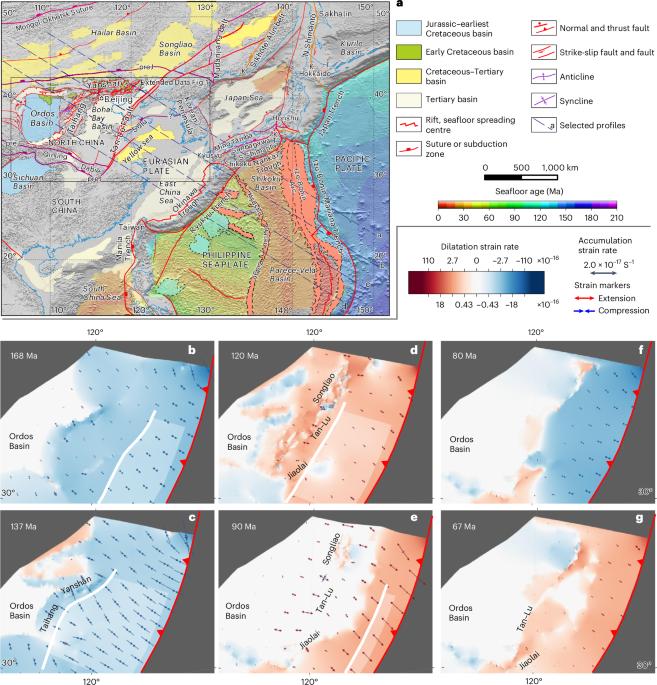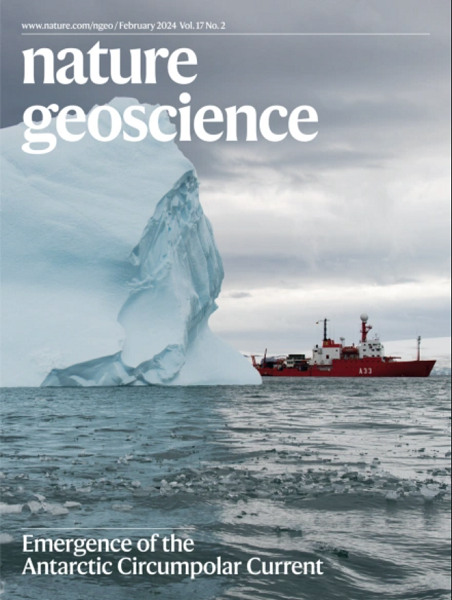来自平板俯冲和滚回的克拉通变形
IF 15.7
1区 地球科学
Q1 GEOSCIENCES, MULTIDISCIPLINARY
引用次数: 0
摘要
尽管提出了与俯冲和深地幔羽流过程的联系,但地球克拉通的变形和最终毁灭的内在机制仍然是个谜。在这里,我们利用中生代晚期以来板幔系统的四维地幔流模型,综合岩石圈变形、地幔地震层析成像和地表地形演变的制约因素,研究了华北克拉通的变形。我们发现,平底板俯冲引起了向陆地的缩短和岩石圈的增厚,而随后的平底板回滚引起了向海的延伸和岩石圈的减薄。这两个俯冲阶段都导致盆地沉积发生了巨大的地形变化。快速的平板回滚,加上跨越660千米地幔不连续面的粘度跃变和相变,是形成大型地幔楔的关键因素。我们认为,平板块的俯冲及其随后的回滚引发了岩石圈延伸和变薄的克拉通变形。将数据整合到力学模型中,可以深入了解涉及俯冲、地幔过程、克拉通变形和地形的四维动态相互作用。本文章由计算机程序翻译,如有差异,请以英文原文为准。


Craton deformation from flat-slab subduction and rollback
The mechanisms underlying the deformation and eventual destruction of Earth’s cratons remain enigmatic, despite proposed links to subduction and deep mantle plume processes. Here we study the deformation of the North China Craton using four-dimensional mantle flow models of the plate–mantle system since the late Mesozoic, integrating constraints from lithospheric deformation, mantle seismic tomography and the evolution of surface topography. We find that flat-slab subduction induced landward shortening and lithospheric thickening, while subsequent flat-slab rollback caused seaward extension and lithospheric thinning. Both subduction phases resulted in substantial topographic changes in basin sediments. Rapid flat-slab rollback, coupled with a viscosity jump and phase change across the 660 km mantle discontinuity, was a key ingredient in shaping a large mantle wedge. We argue that craton deformation through lithospheric extension and thinning was triggered by the subduction of a flat slab and its subsequent rollback. The integration of data into mechanical models provides insights into the four-dimensional dynamic interplay involving subduction, mantle processes, craton deformation and topography. Mesozoic deformation of the North China Craton occurred via lithospheric thickening followed by thinning and extension triggered by flat-slab subduction and rollback, according to four-dimensional mantle flow models of the plate–mantle system.
求助全文
通过发布文献求助,成功后即可免费获取论文全文。
去求助
来源期刊

Nature Geoscience
地学-地球科学综合
CiteScore
26.70
自引率
1.60%
发文量
187
审稿时长
3.3 months
期刊介绍:
Nature Geoscience is a monthly interdisciplinary journal that gathers top-tier research spanning Earth Sciences and related fields.
The journal covers all geoscience disciplines, including fieldwork, modeling, and theoretical studies.
Topics include atmospheric science, biogeochemistry, climate science, geobiology, geochemistry, geoinformatics, remote sensing, geology, geomagnetism, paleomagnetism, geomorphology, geophysics, glaciology, hydrology, limnology, mineralogy, oceanography, paleontology, paleoclimatology, paleoceanography, petrology, planetary science, seismology, space physics, tectonics, and volcanology.
Nature Geoscience upholds its commitment to publishing significant, high-quality Earth Sciences research through fair, rapid, and rigorous peer review, overseen by a team of full-time professional editors.
 求助内容:
求助内容: 应助结果提醒方式:
应助结果提醒方式:


